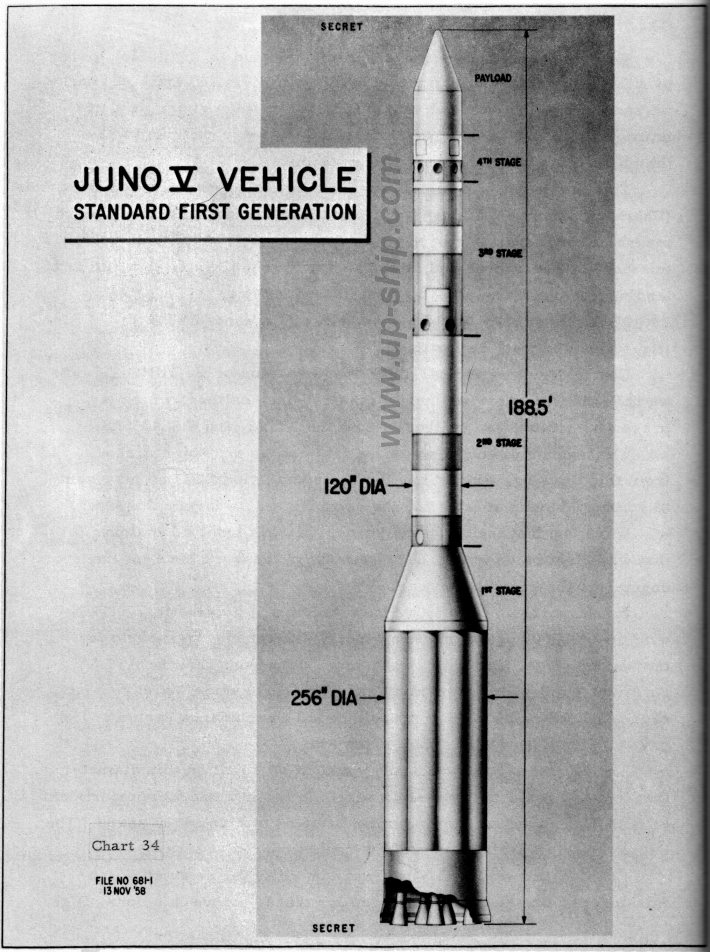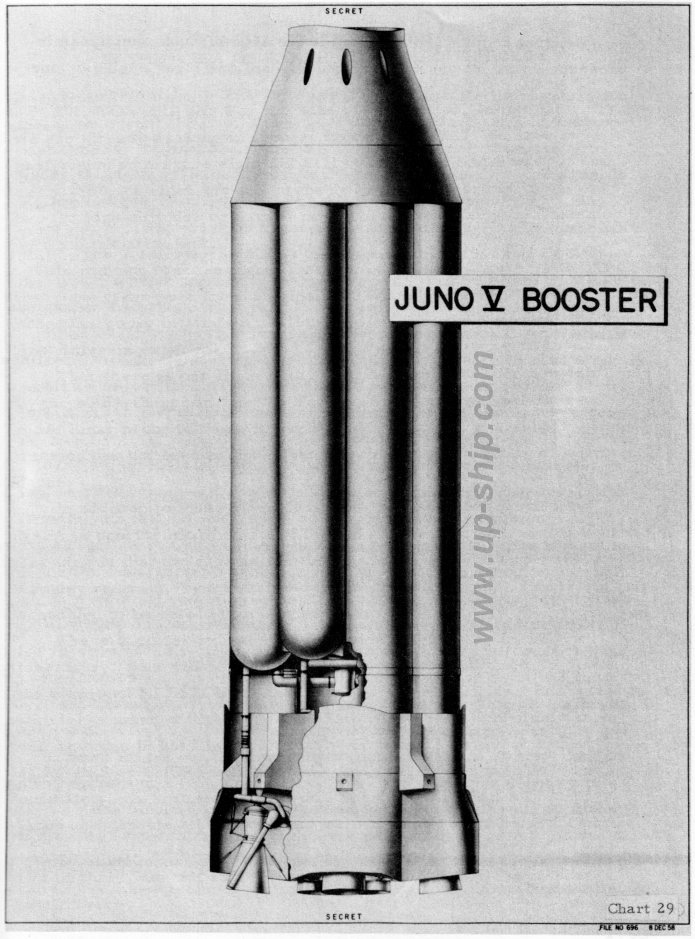The predecessor design to the Saturn I launch vehicle was the US Army’s Juno V, a follow-up to the Super Jupiter. The Juno V used more or less the same first stage as the Saturn I… a cluster of Redstone and Jupiter IRBM tanks, with eight H-1 rocket engines. The upper stages, however, were many, varied, never settled upon, and quite different to the S-IV second stage the Saturn I wound up with. The most common upper stage set for the Juno V was a modification of the Titan II ICBM with storable propellants, or modified for LOX/Kerosene… very different from the hydrogen/oxygen S-IV stage.
Here’s an overall view of the Juno V launch vehicle, dated 13 November, 1958:
And here’s a cutaway of the first stage booster, dated 8 December 1958:
Note that there were some design changes in that 3 or so weeks… the tail of the booster changed, including the addition of a number of hold-down posts (to lock the vehicle to the launch pad so that wind wouldn’t blow it over).
Next up: manned options for the Juno V.
3 Responses to “Juno V: Part 1”
Sorry, the comment form is closed at this time.


Looks even more like a Soviet Proton than a Saturn I did.
Whoever came up with the idea of clustering the eight Redstone tanks around the Jupiter core tank deserved a medal, as that sure sped up things up in regard to building it.
Any idea what stage four was supposed to be?
With four stages, it looks like it’s designed for unmanned lunar or planetary missions.
Wasn’t it a von Braun characteristic, to bundle familiar, reliable, and well-tested engines for a larger booster? He didn’t do that in Germany, but then he didn’t have engines as reliable as the Redstone and the Juno.
One version of WvB’s A10 ICBM booster was to use six A4 (V-2) engines feeding into a single combustion chamber, a scale-up of the A4 engine concept with its multiple propellant injectors.
I don’t know if more propellants were to be fed into to the big chamber, like a jet engine’s afterburner.
You would almost need to do that though just to keep it from melting from the heat of the six engines’ exhaust via “veil cooling” of the chamber’s walls.
Later examination of the concept showed it probably wouldn’t have worked.
Pat